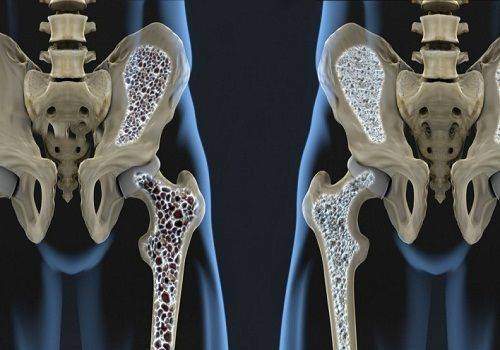
What is osteoporosis?
Osteoporosis is a bone-related disease characterized by a decrease in the density of bone, decreasing the strength of bone resulting in fragile and soft bones. Osteoporosis causes abnormally porous bone that is compressible, like a sponge. This disorder of the skeleton weakens the bone and results in frequent bone fractures.
Our bones are formed of collagen, protein, and calcium, which provide the bone its required strength. Bones when affected by osteoporosis can break with even minor injuries and falls. The fracture can be either in the form of cracking or collapsing. Some locations such as hips, ribs, spine, and wrists are more susceptible to fractures, where bone fractures are more common and may occur due to osteoporosis, though osteoporosis-related fractures can occur in any other bone also.
What causes osteoporosis?
The following are some causes that can increase the risk of osteoporosis:
- Females are more at risk
- Race: Caucasian or Asian race
- Thin and small body frames are more susceptible
- Family history of osteoporosis (such as if your mother had an osteoporotic hip fracture your risk of hip fracture also doubles)
- Personal history of fracture as an adult
- Smoking
- Alcohol consumption
- Diet that is low in calcium
- Lack of exercise or physical activity
- Poor nutrition and poor overall health
- Chronic inflammation or bowel disease
- Malabsorption such as when nutrients are not properly absorbed from the gastrointestinal system.
- Bowel diseases, such as celiac sprue that can be associated with skin diseases, such as dermatitis herpetiformis
- Low estrogen levels in women which may occur in menopause or for other reasons
- Low testosterone levels in men (called hypogonadism)
- Chemotherapy can cause early menopause due to its toxic effects on the ovaries which may be a risk factor of osteoporosis
- Amenorrhea (that is loss of the menstrual period) in young women is associated with low estrogen and osteoporosis, and may lead to weaker bones. Amenorrhea can occur in women who go through extremely vigorous exercise or training and in women with very low body fat.
What are osteoporosis symptoms?
Osteoporosis can occur without any symptoms for many years because osteoporosis doesn’t cause symptoms until bone breaks such as due to falls or minor injuries etc when the bone density is significantly reduced. People may generally ignore some osteoporosis fractures for many years if they do not cause symptoms. Therefore, some people are not aware of their osteoporosis until they suffer a painful fracture.
The symptom associated with osteoporosis fractures is pain. The location of the pain depends on the location of the fracture or cracks. The symptoms of osteoporosis in men are almost similar to the symptoms of osteoporosis in women. However, it is more common in women than in men.
Fractures of the spine can cause severe pain that radiates from the back to the sides of the body. Over many years, multiple fractures can lead to chronic lower back pain as well as loss of height and/or curving of the spine due to collapse of the spine. The collapse gives individuals a hunched- appearance of the upper back, called a “dowager hump”. This is similar to the back commonly is seen in old women.
Hip fractures generally occur as a result of a fall. If the person has osteoporosis, hip fractures can occur as a result of minor falls also.
You cannot treat osteoporosis completely but there are ways to manage the disease. Read here to know about osteoporosis prevention.
Osteoporosis is a public health issue
- In the U.S., about 44 million people have low bone density. This is about 55% of the U.S. population aged 50 years and older.
- One in two Caucasian women gets a fracture of bone due to osteoporosis.
- In the U.S., health care costs from osteoporosis fractures is about a billion dollars.
- About 20% of people who experience a hip fracture will die in the following year.
- Only one-third of people with a hip-fracture are able to get their pre-fracture level of function.